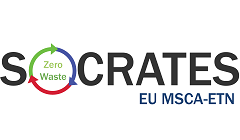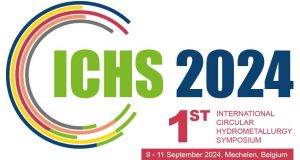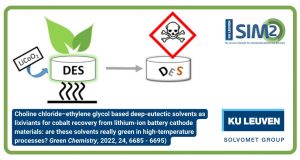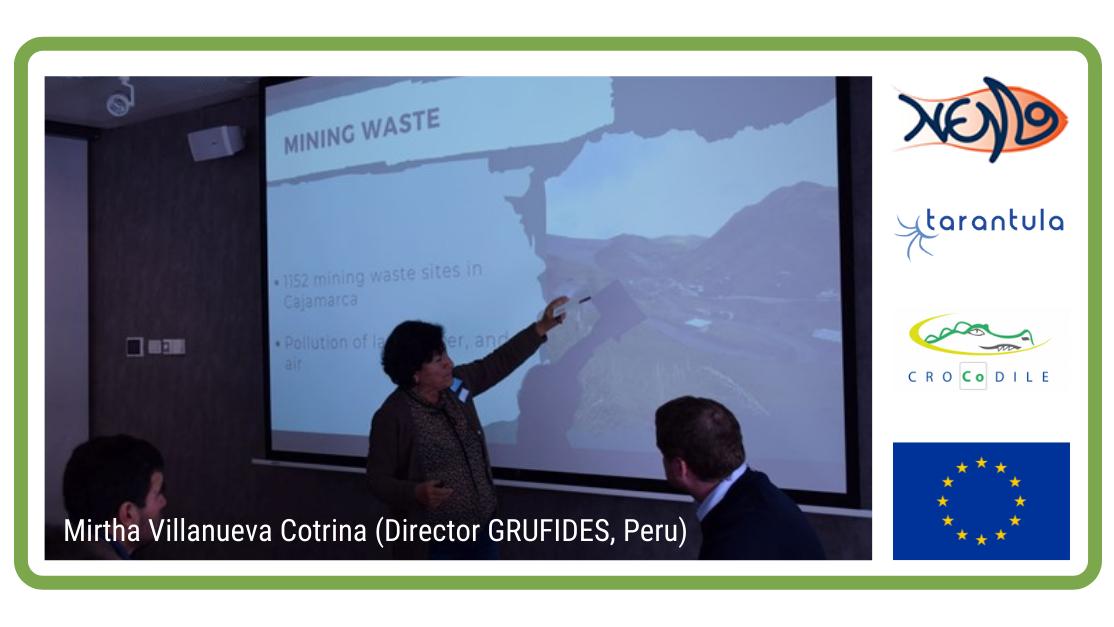SIM² KU Leuven researchers developed a new, selective method to recover indium from iron-rich solutions. This work, funded through EU METGROW+, was published as a golden open access paper in the Journal Separation and Purification Technology. (PTJ, 12/12/2018)

Indium
Indium is a precious metal which is used in a lot of technological applications, such as liquid crystal displays (LCDs), plasma displays, photovoltaic solar cells, light emitting diodes (LEDs) or lasers. Due to its high supply risk and its high economic importance, indium is considered as one of Europe’s critical metals. Since it only occurs in association with zinc, copper, iron or lead minerals and ores, it is only produced as a by-product of other processes.
Goethite
To increase the resource efficiency, the focus should be shifted from recovering indium from primary sources to secondary sources, such as goethite. Goethite is a by-product of the zinc processing industry and consists mainly of iron and zinc. Goethite also contains indium, albeit only being present in very low concentration (ppm level). Therefore, much attention is paid to the separation of indium from highly-concentrated contaminants, such as iron.
SILP technology
The technology used in this manuscript is the so-called supported ionic liquid phases (SILPs) technology. The SILPs technology, in which a thin ionic liquid layer is either covalently anchored or impregnated onto a (porous) solid support, is a technology which combines the advantages of both solvent extraction and adsorption chromatography. The high selectivity for indium in this manuscript was obtained by exploiting the difference between iron and indium in the formation of iodide species. Indium iodide species were selectively adsorbed to the Aliquat 336 iodide layer of the SILP and stripped again with a sulphuric acid solution. The SILP was reusable in multiple cycles without the need to regenerate it.
Developed flowsheet
A proposed flowsheet for the selective recovery of indium from an iron-rich matrix solution (goethite) using the Aliquat 336 iodide SILP in batch-mode is shown below.

Full reference to the paper
Van Roosendael, S., Regadío, M., Roosen, J. and Binnemans, K. (2019). Selective recovery of indium from iron-rich solutions using an Aliquat 336 iodide supported ionic liquid phase (SILP). Separation and Purification Technology, 212, 843-853. DOI: 10.1016/j.seppur.2018.11.092
Biography Stijn Van Roosendael
 Stijn Van Roosendael joined the SOLVOMET Group of prof. Binnemans in 2014 for his master thesis, investigating the recovery of scandium from bauxite residue leachates by adsorption on functionalized chitosan-silica hybrid materials. After obtaining his master’s degree, he began a PhD in collaboration with VITO, but was forced to stop his doctoral study one year later. Instead, prof. Binnemans offered him a position as a research associate to work on the European Horizon 2020 METGrow+ project, which was very closely related to his interests in recycling and the circular economy.
Stijn Van Roosendael joined the SOLVOMET Group of prof. Binnemans in 2014 for his master thesis, investigating the recovery of scandium from bauxite residue leachates by adsorption on functionalized chitosan-silica hybrid materials. After obtaining his master’s degree, he began a PhD in collaboration with VITO, but was forced to stop his doctoral study one year later. Instead, prof. Binnemans offered him a position as a research associate to work on the European Horizon 2020 METGrow+ project, which was very closely related to his interests in recycling and the circular economy.
Acknowledgments
This work was supported by the European Union’s Horizon 2020 research and innovation programme: Metal Recovery from Low-Grade Ores and Wastes Plus (METGrow+) [grant number 690088]. Project website: metgrowplus.eu.







